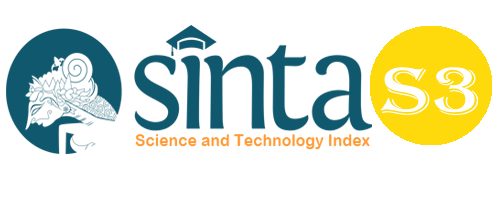Predictive Policing: Current and Future Policing
Abstract
In the era when everything is moved by data, policing efforts are necessary and important for self-adaptation. Predictive policing is in these dynamics of data-based policing to do prediction and to take the action which can change certain outcome to the expected result. Nevertheless, the existing literature usually discuss predictive policing in technical micro dimension. This writing fulfils the gap which has smaller attention from the literature that is the discussion on each meso and micro dimension which has tactical and strategical characteristics. As a result, the complete and integrative perspectives can be contributed to discourse of predictive policing.
Keywords
Full Text:
PDFReferences
Arif, S. (2019). Influence of Leadership, Organizational Culture, Work Motivation, and Job Satisfaction of Performance Principles of Senior High School in Medan City. Budapest International Research and Critics Institute-Journal (BIRCI-Journal). P. 239-254
Bakke, E. (2018). Predictive policing: the argument for public transparency. NYU Ann. Surv. Am. L., 74, 131.
Beck, C., & McCue, C. (2009). Predictive policing: what can we learn from Wal-Mart and Amazon about fighting crime in a recession? Police Chief, 76(11), 18.
Bennett Moses, L., & Chan, J. (2018). Algorithmic prediction in policing: assumptions, evaluation, and accountability. Policing and Society, 28(7), 806–822.
Biderman, S., & Scheirer, W. J. (2020). Pitfalls in machine learning research: Reexamining the development cycle.
Bratton, W., Morgan, J., & Malinowski, S. (2009). The need for innovation in policing today.
Brugha, R., & Varvasovszky, Z. (2000). Stakeholder analysis: a review. Health Policy and Planning, 15(3), 239–246.
Egbert, S., & Leese, M. (2021). Criminal futures: Predictive policing and everyday police work. Taylor & Francis.
Ferguson, A. G. (2017). Policing Predictive Policing, 94 Wash. UL Rev, 1109, 1122–1144.
Geller, G. (1997). Horizontal subsurface flow systems in the German speaking countries: summary of long-term scientific and practical experiences; recommendations. Water Science and Technology, 35(5), 157–166.
Jones, K., & by Deloitte, B. (2015). Ready or not? Is HR ready for analytics. Workforce Solutions Review (November).
Kenny, D. E. (2016). A force for good: Exploring the future of non-crime policing .
McDaniel, J. L. M., & Pease, K. (2021). Predictive Policing and Artificial Intelligence. Routledge, Taylor & Francis Group.
Niati, D. R., Siregar, Z. M. E., & Prayoga, Y. (2021). The Effect of Training on Work Performance and Career Development: The Role of Motivation as Intervening Variable. Budapest International Research and Critics Institute (BIRCI-Journal): Humanities and Social Sciences, 4(2), 2385–2393. https://doi.org/10.33258/birci.v4i2.1940
Pearsall, B. (2010a). Predictive policing: The future of law enforcement. National Institute of Justice Journal, 266(1), 16–19.
Pearsall, B. (2010b). Predictive policing: The future of law enforcement. National Institute of Justice Journal, 266(1), 16–19.
Perry, W. L. (2013). Predictive policing: The role of crime forecasting in law enforcement operations. Rand Corporation.
Sacchetti, S., & Tortia, E. (2014). Multi-stakeholder governance. A social enterprise case study. International Journal of Cooperative Management, 7(1), 58–72.
Shah, M. et al. (2020). The Development Impact of PT. Medco E & P Malaka on Economic Aspects in East Aceh Regency. Budapest International Research and Critics Institute-Journal (BIRCI-Journal). P. 276-286.
Tayebi, M. A., & Glässer, U. (2016). Social network analysis in predictive policing. In Social Network Analysis in Predictive Policing (pp. 7–14). Springer.
Uchida, Y., Takahashi, Y., & Kawahara, K. (2014). Changes in hedonic and eudaimonic well-being after a severe nationwide disaster: The case of the Great East Japan Earthquake. Journal of Happiness Studies, 15(1), 207–221.
Van Brakel, R., & de Hert, P. (2011). Policing, surveillance and law in a pre-crime society: Understanding the consequences of technology based strategies. Technol. Led Policing, 20, 165–192.
Veenstra, A. F. van, & Kotterink, B. (2017). Data-driven policy making: The policy lab approach. International Conference on Electronic Participation, 100–111.
Walsh, W. F., & Vito, G. F. (2018). Police leadership and administration: A 21st-century strategic approach. Routledge.
Wortley, R., Mazerolle, L. G., & Rombouts, S. (2008). Environmental criminology and crime analysis.
DOI: https://doi.org/10.33258/birci.v5i1.4076
Article Metrics
Abstract view : 212 timesPDF - 116 times
Refbacks
- There are currently no refbacks.

This work is licensed under a Creative Commons Attribution-ShareAlike 4.0 International License.

This work is licensed under a Creative Commons Attribution-ShareAlike 4.0 International License.

_.gif)

















_.gif)



